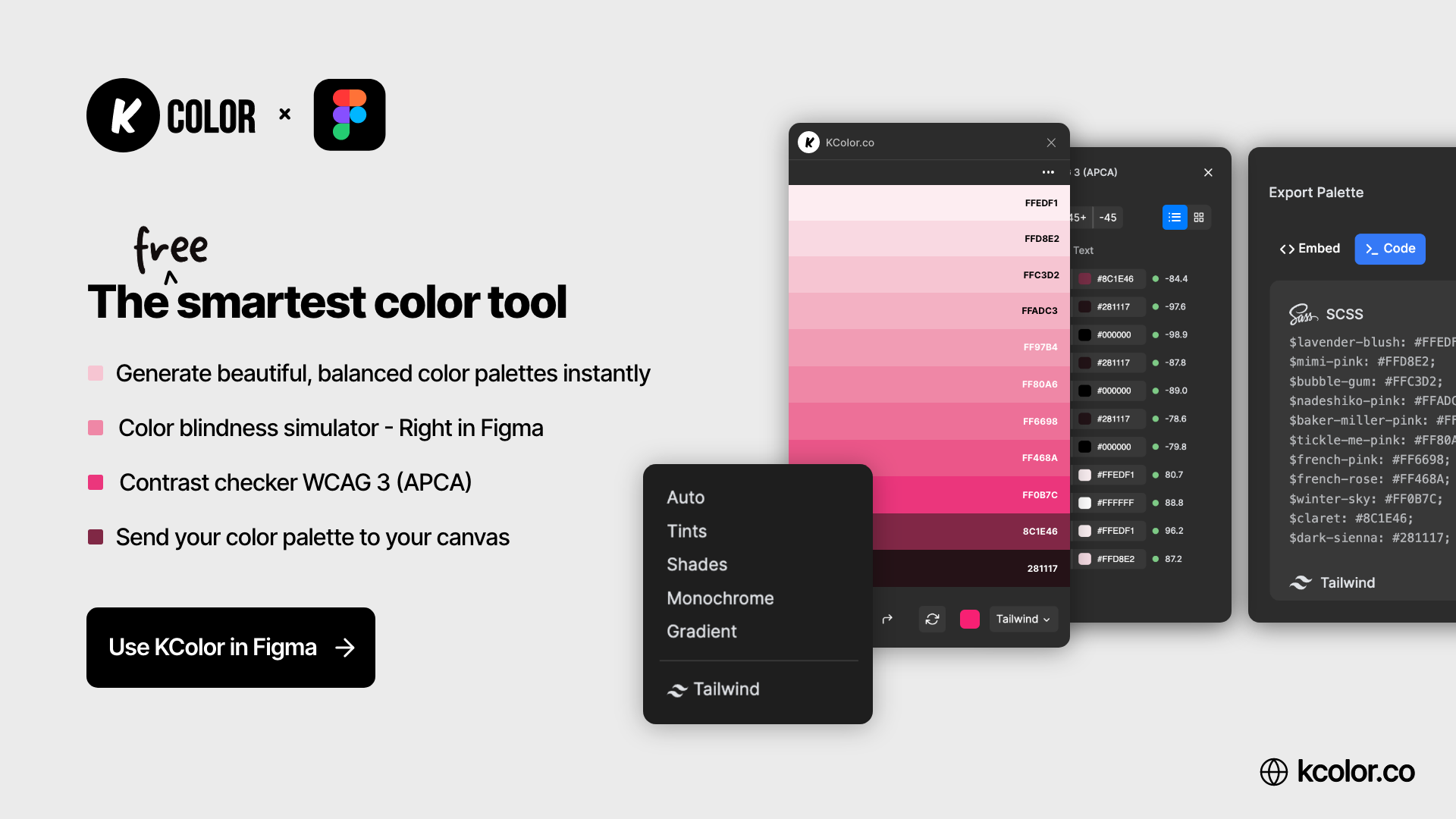Let’s break down the Figma color palettes
You see, the Figma color palettes are not randomly picked like jellybeans from a candy jar. These hues were certainly chosen with sharp intention, cool-headed strategy, and a deep understanding of how humans respond to color on both a rational and emotional level.
The Attention Magnet
This is not your average tomato red. This is a warm, juicy hue that screams “Hey! Look at me!” without being aggressive. Figma uses this color to grab attention quickly. Red is psychologically linked to urgency, action, and emotion. It keeps the energy up and gives interfaces a pulse. In a world of grayscale design tools, this splash of red brings the heartbeat.
Why Figma picked it: To spark quick decisions and highlight key features without alarming the user. It’s assertive, not aggressive. Think salsa, not sirens.
The Friendly Innovator
Orange is like the extrovert at a networking event. It’s warm, it’s inviting, and it wants to hear your wildest design ideas. This color channels enthusiasm and confidence, while gently nudging users into a creative headspace. It’s also often associated with accessibility and openness.
Why Figma picked it: To make the tool feel less like enterprise software and more like a cool workspace where you can experiment. Orange says, “Go ahead, break the rules. Let’s see what happens.”
The Creative Genius
This is the zinger. Purple has always been the color of artists, innovators, and slightly eccentric wizard types. It blends the calm of blue with the fire of red, and the result is pure imagination fuel.
Why Figma picked it: To represent the spark of originality that powers great design. It supports the idea that Figma isn’t just a tool, it’s a stage for your wildest, weirdest, most wonderful ideas.
The Trust Builder
Blue is the digital world’s equivalent of a firm handshake. Every SaaS product from here to Mars uses blue, but Figma’s take is more playful, less corporate. It’s a sky blue that feels breezy rather than bureaucratic.
Why Figma picked it: To build trust without being boring. Users are putting their work—sometimes their careers—in Figma’s hands. Blue says, “You’re safe here. Your files are chill. We’re cool.”
The Collaborator
Ah, green. The universal signal for “go” and “grow.” In Figma’s universe, this minty-fresh green embodies teamwork and progress. It’s not an intense forest green that reminds you of spreadsheets, but a vibrant pop that evokes movement and friendliness.
Why Figma picked it: To symbolize collaboration, which is literally what Figma is all about. You’re not designing alone. Green makes that obvious without saying a word.
The Color Symphony
Figma’s color palette isn’t just six cool colors slapped together. It’s a balanced system with contrast, rhythm, and versatility. The palette is bright but not blinding, friendly but not childish, energetic but not chaotic. It adapts to both light and dark interfaces like a color ninja.
The logo itself is a perfect example of this harmony. Each color has its place, stacked in rounded rectangles that represent functionality, fluidity, and approachability. They’re arranged in a way that feels balanced, almost playful, without tipping into the unprofessional.
And those colors are used consistently across everything, website, product UI, launch graphics, blog illustrations, event swag. It’s cohesive. It’s loud in a good way. It’s like walking into a room and instantly knowing, “Oh yeah, this is Figma’s vibe.”
The KColor team loves Figma for choosing this palette. It is more than a brand identity. It’s a brand mood. And in a world of muted SaaS logos and sterile dashboards, Figma’s colors are like showing up to a Zoom call in holographic sneakers. Unexpected. Unapologetic. Unforgettable.
So yeah, when you see that red, orange, yellow, green, blue, and purple stack, you’re not just looking at a color palette. You’re looking at a manifesto dressed in RGB.
